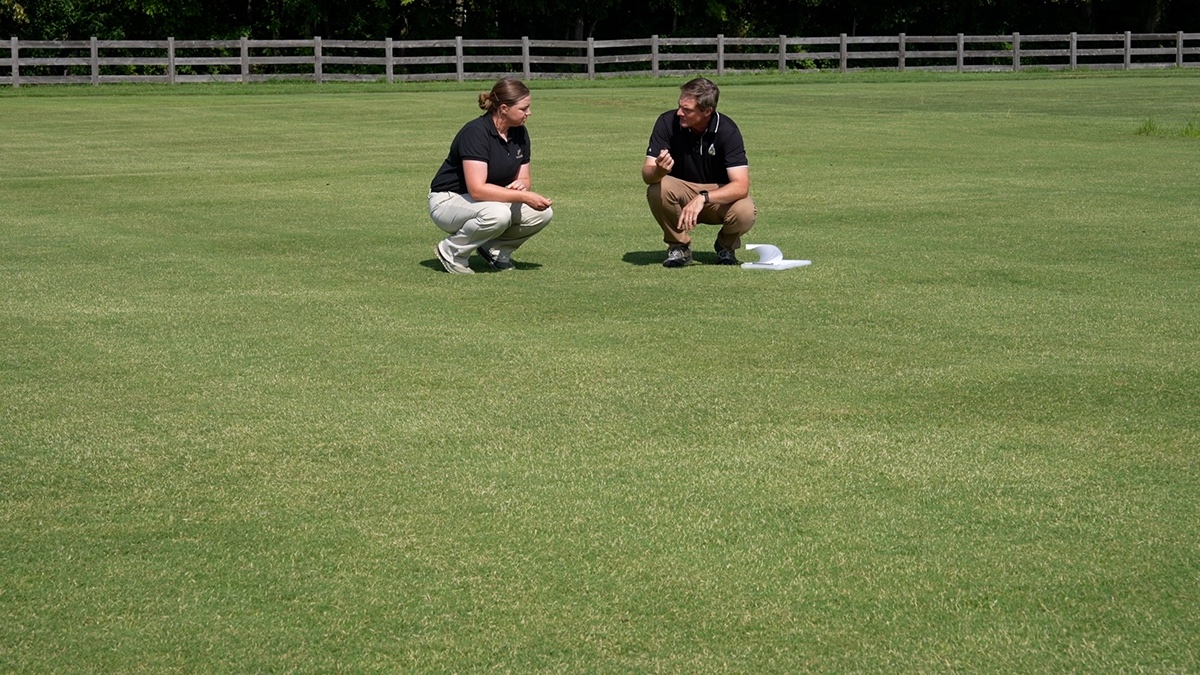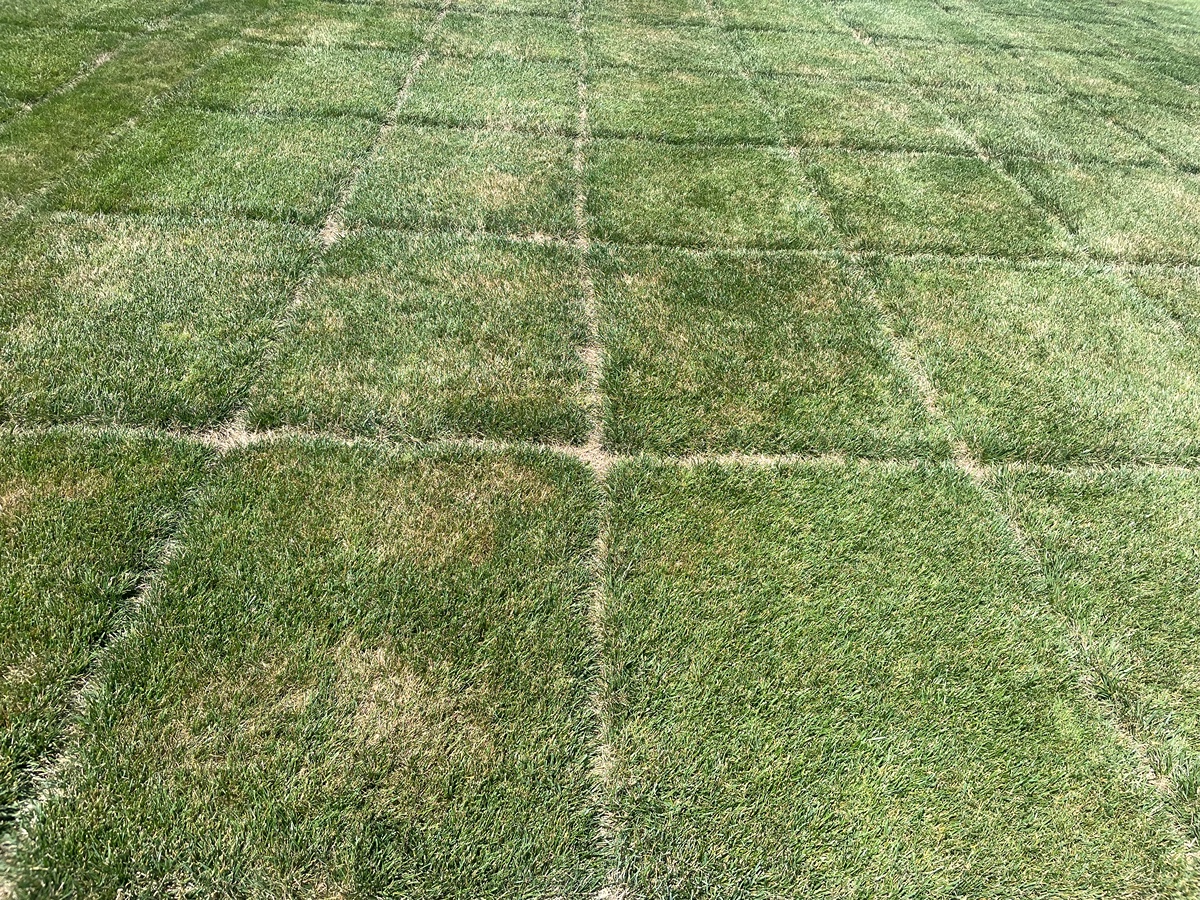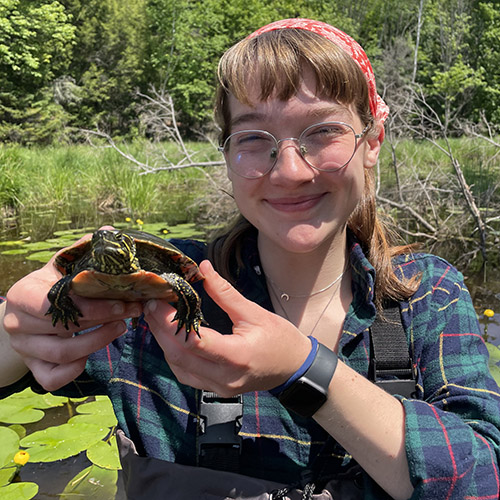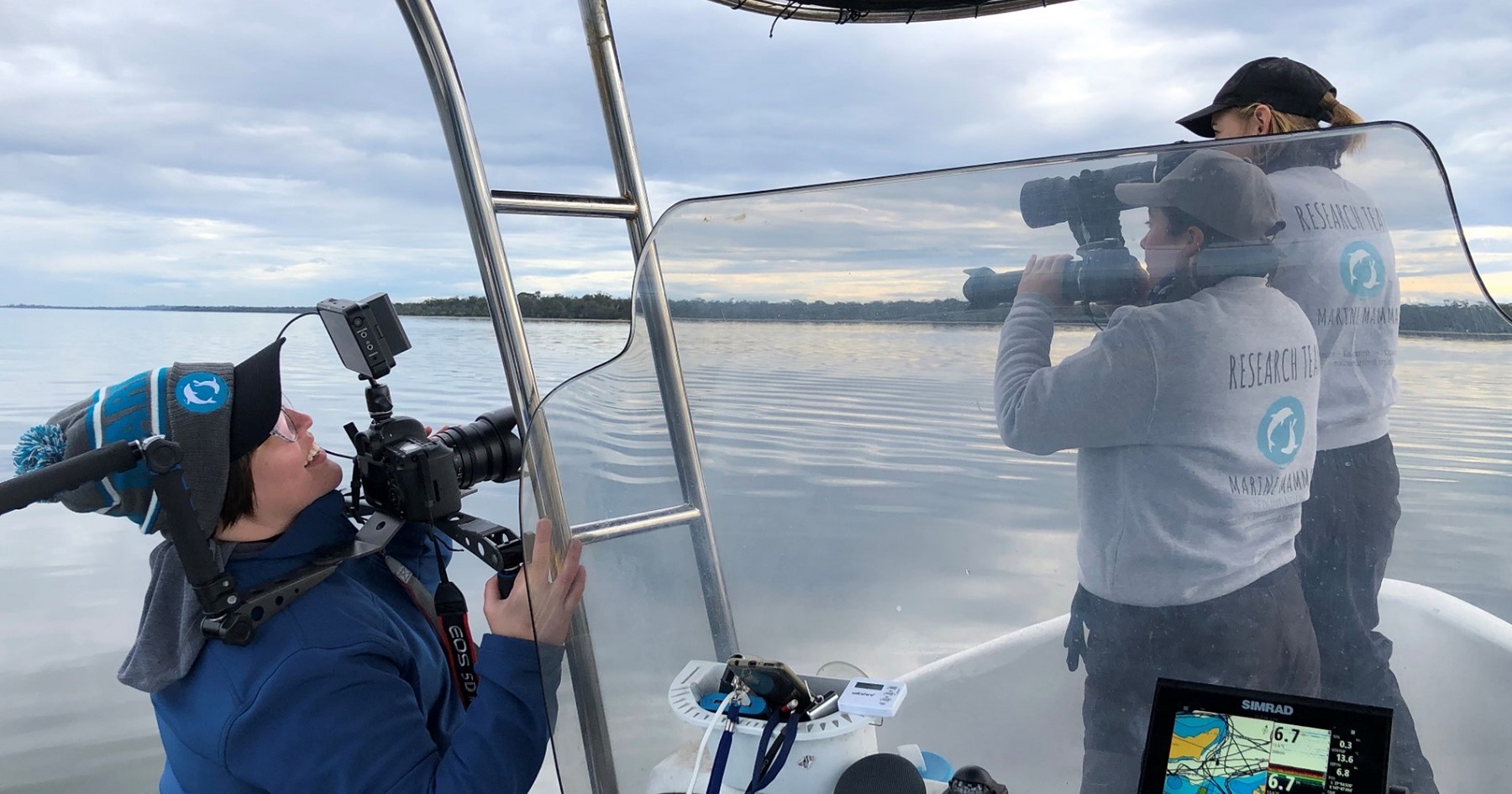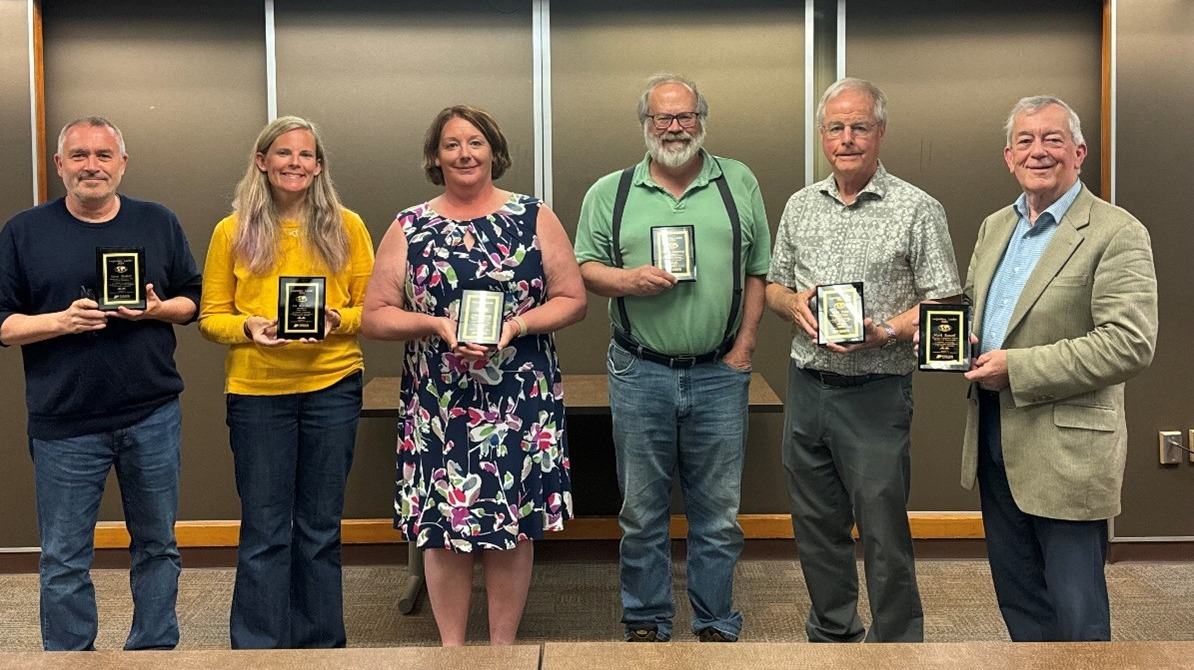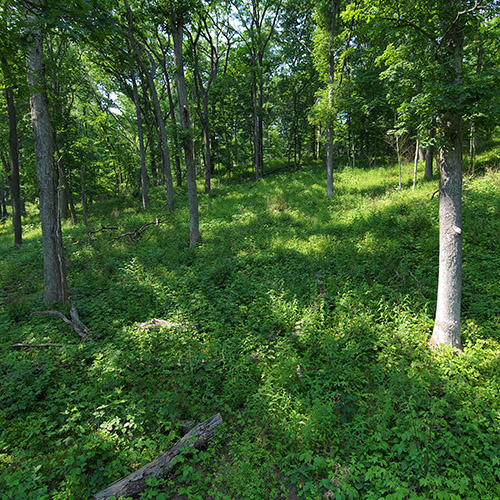When Virginia Tech and Purdue University kick off a much-anticipated football game on September 9, it is not the only time the two universities share a field.
The two turfgrass programs have a long-standing partnership which began in the 1960’s with Drs. Bill Daniel and Dick Schmidt. This relationship has continued today, and the current researcher continue to bounce ideas off each other to further the impact of their land-grant missions.
From the Mid-Atlantic to the Midwest, brown patch is the most common lawn disease for tall fescue. In 2021, a collaborative project combined the efforts of Cale Bigelow ’93, M.S. ’95, a professor of horticulture at Purdue, Purdue turfgrass research associate Jada Powlen, and Virginia Tech associate professor David McCall to find real, usable solutions to the problem.
Together, they hope to find ways to reduce fungicide use in turf-type tall fescue lawns. This would help lawnowners save both money and energy in the upkeep of their lawns while maintaining the desirable characteristics of a lawn.
“Tall fescue is a very common species in home lawns in both Indiana and Virginia,” said Powlen, who is the lead on the project. “One of the things we have been able to do with Virginia Tech is look at different varieties of tall fescue that are more disease resistant and able to reduce the overall amount of disease and in turn reduce pesticide needs for lawns.”
Similar trials are being done at both locations, with the big benefit being that of geography.
“This is key to the project,” explained McCall. “We can show what works in each location and extrapolate that to the areas in-between. Regarding home lawns, brown patch is one of the things that homeowners spend a significant amount of money to try to manage.”
Having locations at two geographically distant universities opens the door to a much larger audience served by the project results.
With a plot at Purdue University and Virginia Tech, consisting of two varieties of turf-type tall fescue, the research team spent considerable time establishing the plots precisely. The establishment of the plots followed the procedure of:
- Clearing the space
- Adding a prescribed amount of topsoil
- Tilled the soil
- Seeded each plot by hand for uniformity
A big part of the project was letting the fescue grow naturally and its response to brown patch without interference.
“A lot of money is spent on maintaining lawns for a variety of purposes,” McCall said. “One of the biggest obstacles is disease management, so whether it is a homeowner or a lawn care operator, a lot of money is spent on applying fungicide. One of the important things about this project is we can show ways that you can reduce the overall amount of disease without having to rely on fungicides quite as often.”
Bigelow’s collaborative research with Virginia Tech is a natural fit thanks to his longstanding ties to both universities. Bigelow earned a bachelor’s degree in turf management from Virginia Tech in 1993 and a master’s degree in turf ecology two years later. His wife and son also graduated from the university.
Bigelow has kept in close contact with his Virginia Tech turfgrass colleagues while conducting research with Purdue’s Department of Horticulture & Landscape Architecture.
“We are constantly kicking around different projects that might have applicability across our region,” said Bigelow.
“These multi-institutional ideas are really helpful in terms of thinking about problems a little bit differently and also getting those ideas out into the public.”
The success story of bermudagrass’s adoption in athletics at Purdue is one of his favorite examples of successful collaboration.
"We evaluate a variety of grass species here at Purdue for lawns, athletic fields and golf courses,” he explained. When Bigelow first arrived at Purdue, he noticed the grass used for football fields around the state was having trouble enduring the summer stresses and traffic faced in the late-summer and early-fall.
“One of the ideas that we had was to potentially swap out our traditional cool-season grasses for warm-season grasses like bermudagrass. Bermudagrass was not typically grown here in the state of Indiana because of concerns about winter-kill,” Bigelow recalled. “Some of our breeding friends had developed newer cold-hardy bermudagrasses that we were trialing in places like Virginia Tech and here at Purdue University. I had an idea that some of these new bermudagrasses might be suitable for athletics fields in Indiana."
In 2006, Purdue’s sports field managers converted some of the soccer and football fields to test bermudagrass. The trials were so successful they inspired other organizations to follow suit.
“If people can see it being done at stadium fields,” explained Bigelow, “those technologies and management practices eventually trickle down into smaller colleges, high schools and, even in some situations, middle schools.”
Knowledge can spread up the chain as well.
“The Chicago Bears installed a bermudagrass practice field at their facility,” Bigelow said. “That’s probably the most northern bermudagrass field that we have in the United States right now.”
Projects such as these become their best when partners are involved.
Collaborations with universities such as Virginia Tech have been a great opportunity for us to share ideas, learn different methods and techniques and provide cutting-edge research for turf managers in our industry.
- Jada Powlen, Purdue turfgrass research associate
